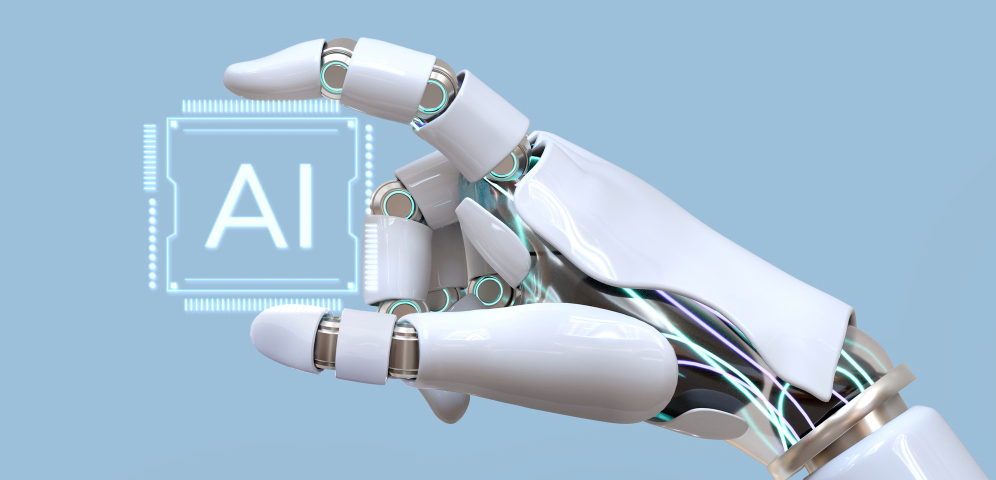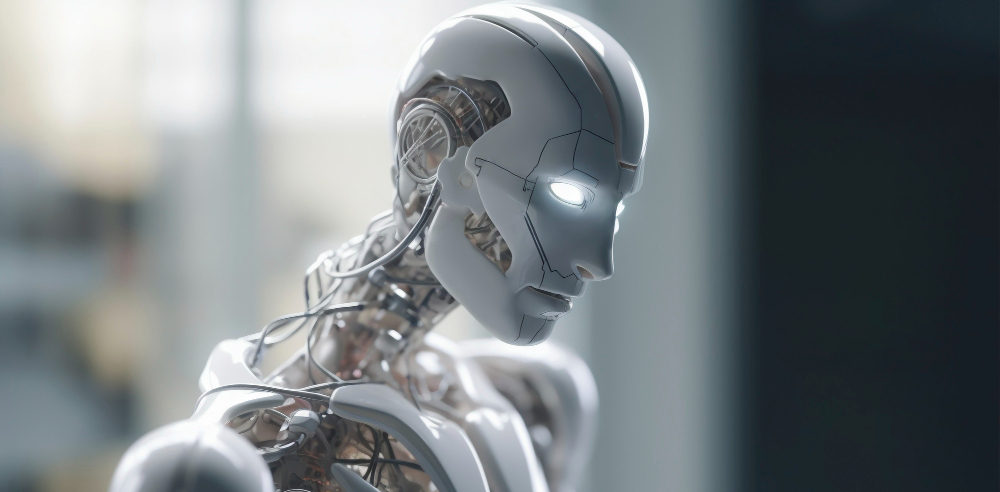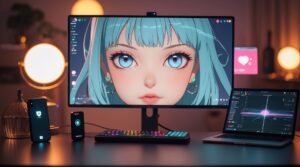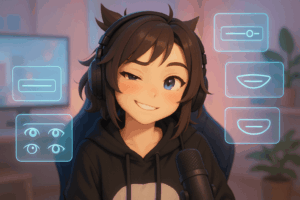AI-generated 3D models have revolutionized the generation of 3D game assets. In today’s gaming industry, 3D assets play an important role in bringing virtual worlds to life, and their quality can make or break a gaming experience. With the rapid growth of technology, particularly in the field of artificial intelligence (AI), developers now have a strong tool at their disposal to change the generation of 3D game materials. In this beginner’s guide, we’ll look at the interesting world of AI-generated 3D models and how you can seamlessly integrate them into your games.
I. AI-Generated 3D Models for creating 3D game assets
Before moving on to the topic of AI-generated 3D models, it’s critical to grasp the importance of 3D game assets in today’s game development. Characters, environments, objects, and animations are all examples of 3D assets. They serve as the foundation for virtual worlds, boosting the visual appeal and interaction of games. Artificial intelligence has been a game-changer in various industries, and game development is no exception. AI algorithms have the potential to automate and optimize the creation of 3D assets, saving time and effort that will otherwise be necessary for human modeling and texturing.
The purpose of this blog is to introduce beginners to the world of AI-generated 3D models and provide insights into their integration into games.
II. Understanding 3D Game Assets with AI-Generated 3D Models
In the space of modern game development, 3D game assets are the threads that combine creative virtual worlds. The 3D assets which comprises of digital characters and objects adds depth and realism to video games. They are the foundation of a game’s aesthetic and interaction appeal. 3D game assets are more than just decorations; they form the foundation of player experiences, acting as the groundwork upon which interesting narratives and engaging gameplay are built.
A. 3D Asset Evolution in the Gaming Industry
The game industry’s archives show a thrilling story of transformation, in which 3D assets have undergone a remarkable evolution. From the basic beginnings of polygonal models that typified early gaming, we have experienced a period of transformation. We are now living in a time where 3D assets have high-definition textures, real face emotions, and finely detailed landscapes. This growth exemplifies game creators’ relentless need for realism and immersion.
B. The High Demand for High-Quality Game Assets in Online Gaming
In today’s gaming industry, complexity is the norm, and graphic quality is the expectation. The demand for high-quality 3D graphics has reached unprecedented heights as players traverse magnificent open worlds, engage in epic battles, and discover deep storylines. Pixilated textures and clumsy character motions are no longer acceptable to players. Instead, they crave the realism of facial emotions, the fluidity of character movements, and the complexity of intricately built surroundings. High-quality 3D asset creation has now become a cornerstone of game development, guaranteeing that every pixel contributes to the tapestry of immersive gaming experiences.

III. AI’s Influence on Game Asset Creation
A. Overview of AI-generated game assets
The use of artificial intelligence (AI) into game production has prompted a revolution in the generation of 3D game components. AI-generated game assets include 3D models and textures that were created or improved by advanced AI algorithms. These algorithms have the ability to create assets from the ground up, meticulously crafting detailed characters, objects, and landscapes. Furthermore, they may take current assets to new heights of quality and realism, bringing new life to virtual worlds.
B. The Benefits of AI in 3D Model Creation
The introduction of AI into the production of 3D assets has a wealth of benefits that have significantly changed the environment for game development. First and foremost, AI operates at a rapid pace, dramatically lowering the time necessary for asset production. It’s never-ending algorithms mold and texture 3D models, increasing efficiency and freeing up human resources for more creative projects.
Furthermore, AI provides an unparalleled level of consistency in asset development. Each process has no sign of human mistake, maintaining consistency in asset quality. This consistency is especially important in large-scale game development projects, where maintaining good quality can be difficult. Perhaps most notably, AI’s ability to generate a large number of assets with little human participation is a game changer. Now that AI can provide the resources needed to make them come to life, developers can envision vast, aesthetically stunning gaming worlds.
C. Important technology and tools for AI-Generated 3D Models
3daily, a cutting-edge platform that accelerates the process of generating top-tier 3D models and textures, is one noteworthy example of AI-powered asset creation. Such solutions bridge the gap between developers and AI by providing user-friendly interfaces that make it simple to exploit AI’s capabilities. Developers that delve into the capabilities and functionalities of such tools open up a world of creative possibilities. What was once a daunting process in 3D asset development has evolved into a compelling journey of inspiration and aesthetic brilliance.
IV. Transitioning from 2D to 3D
A. The importance and advantages of shifting from 2D to 3D with 3D model AI Generator
The move from 2D to 3D assets is similar to stepping from black and white to a world of bright hues. While 2D assets retain their appeal in specific game genres, the transition to 3D is frequently required in modern game production. This change has a number of advantages, including increased realism, deep engagement, and a larger canvas for creative expression.
B. Conversion methods for 2D assets to 3D
A variety of approaches exist for game developers who are looking to update their aesthetics while leveraging old 2D assets. Extrusion, in which 2D shapes are elevated into 3D objects, and voxelization, in which pixel art is converted into three-dimensional blocks, are two of these techniques. By using these techniques, developers can keep the spirit of their original designs while adding depth and dimension to them.
C. Using AI to convert 2D to 3D images
In this age of AI, the process of converting from 2D to 3D has transformed into an AI-enhanced voyage of transformation. AI systems excel at understanding spatial relationships within 2D objects and can generate corresponding 3D models automatically. This automation not only speeds up the process but also improves the quality of the final 3D assets by collecting delicate details and nuances that would be difficult to duplicate manually.
As we explore the boundaries of AI-powered asset creation and the transition from 2D to 3D, we discover a remarkable synergy between these two worlds. AI enables developers to bring their 3D dreams to life, providing efficiency, consistency, and endless creative possibilities. Whether creating from scratch or moving from 2D, AI is a formidable ally in the pursuit of visually attractive and engrossing game experiences.
V. How AI-Generated 3D Models Work
A. In-depth overview of AI techniques for 3D model generation
AI-generated 3D models are the result of complex algorithms, and understanding these processes is critical to realizing their full potential. This technology is based on neural networks, which are inspired by the human brain. Deep learning networks examine massive datasets of 3D models to learn the intricacies of shapes, textures, and proportions. Another critical component is machine learning, which allows the model to iteratively develop its products. As a result, the system can build 3D models with incredible accuracy, imitating the intricacy and diversity of real-world objects and characters.
B. Development of AI models for specific game assets
Tailoring AI models to your game’s specific needs is a vital step in developing assets that reflect your artistic vision. This step entails ‘training’ the AI model with a dataset that represents the attributes you want in your assets. Whether developing future spacecraft or creating mythical creatures, the training procedure allow the AI to understand the specific characteristics that distinguish your game assets. This modification guarantees that the AI-generated models blend in with the story and look of your game.
C. Generating 3D models from photos
The ability to transform 2D photos, photographs, and even hand-drawn sketches into elaborate 3D models is one of the AI’s outstanding skills. AI algorithms can build accurate 3D representations by studying the visual clues within various 2D sources and extrapolating depth, shape, and texture. This functionality provides game developers with a plethora of possibilities, allowing them to breathe life into their works from a variety of sources, such as translating concept art into fully formed characters or transforming real-world objects into interactive parts within the game environment. AI’s adaptability in this sense makes it a potent asset creation tool.

VI. Overview of low poly game assets
Low poly game assets, distinguished by their simplicity and low amount of polygons, have gained popularity in modern game production for a variety of reasons. These components embrace minimalism while providing a distinct aesthetic appeal. They maximize speed by rendering fewer polygons, making them a perfect alternative for mobile systems and less capable hardware. Furthermore, their clean lines and bold shapes frequently invoke nostalgia and imagination, allowing developers to create visually unique gaming worlds.
A. The Benefits of Low Poly Assets in Gaming
Low poly assets have advantages that go beyond their aesthetic appeal. Their lower computational needs increase game performance dramatically. This increased efficiency provides smoother game play experiences and broadens the game’s appeal to include gamers with less capable devices. Furthermore, because low poly components are simple, they are great for indie creators and small teams, allowing them to build engaging games with minimum resources.
B. Using AI to create low poly 3D models
AI-driven workflows have found a natural home in low poly asset development. These models frequently have crisp geometric shapes, making them ideal for AI-driven optimization. AI algorithms may reduce complicated 3D models to low poly versions while retaining important details. This not only speeds up the asset development process, but it also preserves the particular visual style of low poly components. In this context, AI’s function is to improve efficiency and minimize complexity, allowing developers to focus on the creative aspects of their projects.
VII. The Benefits of Low Poly Game Assets with AI 3D Model Generator
A. Considering the benefits of using low poly assets
Low poly assets aren’t just a passing vogue; they provide real benefits to game developers. One notable advantage is faster load times. Because low poly graphics take less processing resources to produce, they load faster in games, improving the overall user experience. Furthermore, these files help to smoother gameplay by lowering hardware strain, ensuring that games function smoothly even on older devices.
B. Improving the game’s performance and scalability for AI 3D Model Generation
Low poly images dramatically enhance game performance, making them an appealing alternative for creators looking to make games that appeal to a wider audience. Games with low poly assets retain their visual appeal while assuring seamless and entertaining gaming experiences on mobile devices or less capable consoles. This increased scalability is particularly useful in the diversified landscape of modern game platforms.
C. Keeping a distinct visual aesthetic with low poly models
Low poly objects have a distinct visual appeal that is a creative asset in and of itself. Developers can experiment with striking and memorable visual trends thanks to their simplistic design. Low poly environments stand out in a congested gaming market, leaving players with a lasting impression. This aesthetic singularity may be a valuable tool in storytelling and world-building, assisting creators in creating memorable game experiences that resonate with their target audience.
VIII. Including AI-Generated 3D Models in Your Game
A. Getting your game engine ready for assets with 3D model AI Generator.
Before you can unleash the power of AI-generated assets in your game, you must first prepare your game engine for compatibility. This includes making sure your engine supports the file formats and technologies utilized in AI-powered asset generation. By aligning your engine with these requirements, you are laying the groundwork for a smooth integration process.
B. Importing and integrating AI 3D model Generator seamlessly
Once your game engine is ready, you can begin the process of importing and integrating AI-generated objects. The AI-generated models are translated into a format that your game engine can comprehend and render in this step-by-step procedure. It is critical to ensure that these elements blend seamlessly into the game world in order to maintain visual coherence and immersion.
C. AI asset performance optimization
While AI-generated assets provide significant benefits, optimizing performance remains a top priority. Integrating these assets into your game efficiently while maintaining performance is a tricky balancing act. This will provide you with useful insights, recommendations, and best practices to assist you in striking that balance. It will assist you in ensuring that your game runs smoothly, providing players with a pleasurable and uninterrupted gaming experience, even when AI-generated assets are present.

As technology advances, we will look at future developments in AI-generated game assets, such as more realistic models, increased automation, and improved accessibility. Low poly assets are likely to continue popular in game production due to their various advantages and distinct visual appeal. Finally, we’ll highlight the important points from this course and encourage newcomers to investigate the fascinating possibilities that AI-generated low poly 3D models provide in the field of game creation.
Conclusion
The gaming industry is constantly changing, and AI is at the forefront of this change, enabling developers to build engaging and visually attractive experiences. Whether you’re a beginner or an expert in the field, employing the power of AI-generated 3D models can take your games to new heights, offering players with unforgettable virtual world excursions. Accept the future of game production with AI-generated elements and empower your creative power in the digital realm.




